Cinque Terre: a photo and foodie tour of five of the most picturesque villages of Italy
The five picturesque villages, known as the Cinque Terre, are located on the Ligurian Riviera, between the Mesco Point and the Cavo Promontory (Montenero Point), just beyond the town of La Spezia). They count among the most scenic and colorful villages of Italy.
The landscape of the Cinque Terre is shaped by a rocky coastline and colorful houses built against the cliffs. Three of the villages, Riomaggiore, Manarola, Vernazza, are nestled in small, protected marine inlets. Corniglia is situated higher up a cliff, while the last one, Monterosso, lies within a gulf. The area boasts not only one-of-a-kind, jaw-dropping views and beautiful footpaths, but also quality food products, thanks to itsvineyards, olive groves (in Vernazza), citron (cedro) and lemon trees (in Monterosso), as well as fig and peach trees grown on this small patch of land.
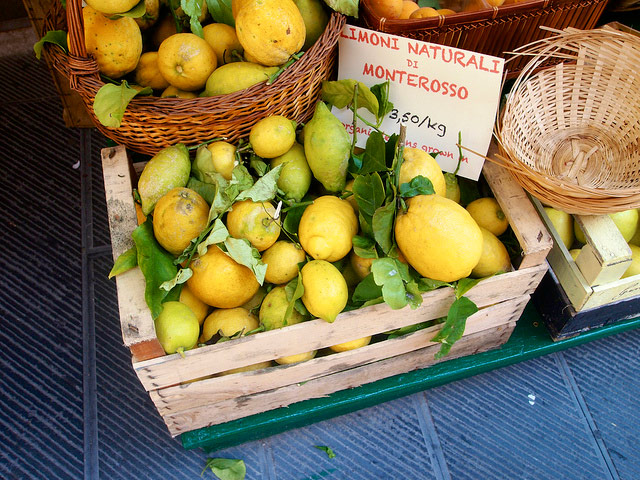
All villages were built on the same principle, with a castle erected on top of the mountain by the feudal families who originally ruled over the Cinque Terre and which served to defend the village against the Saracen invaders and pirates coming from the sea. Lack of open space created the characteristic tall, narrow houses.
The terrain is so hostile that, before the railway, it was very common for people of Monterosso and the other villages to never leave their hometown, let alone to get as far as Riomaggiore and vice versa. The 18th century Italian naturalist Giovanni Targioni described the Five Lands as “mountains and rocky cliffs that not even goats could climb”.
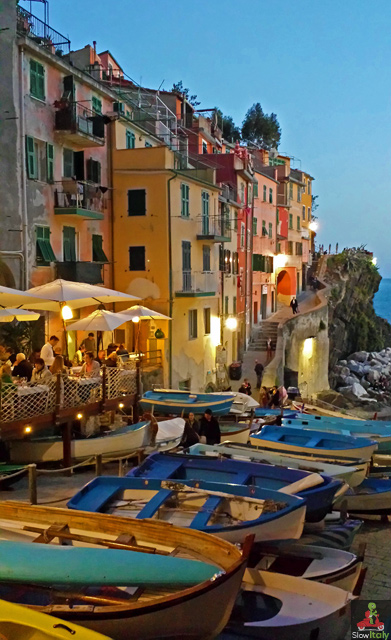
The term “Cinque Terre” was coined by Giacomo Iacopo Bracelli, Chancellor of the Republic of Genoa in 1448, in order to distinguish this agricultural and wine-growing area from the rest of the republic. So the name of the region has always been linked to its wine. The Cinque Terre wine is an excellent dry white DOC wine and the Cinque Terre Sciacchetrà, an amber or golden colored passito (sweet) wine, delicious with aged cheeses and desserts of good consistency (panforte, pandolce,…). Sciacchetrà was one of the first Italian passito wines to be known outside its production area.

The Cinque Terre are famous for their salted anchovies, an icon of the local cuisine, which taste like nowhere else! For centuries, the fishermen of the Cinque Terre have caught this small fish using a traditional technique that, according to the legend, stems for the Saracen pirates. Fishing takes place at night with a lamp which attracts the shoals of anchovies. The anchovies should be eaten three ways: raw with oil and lemon, or flat-leaf parsley and garlic; cooked with potatoes; fried or stuffed.
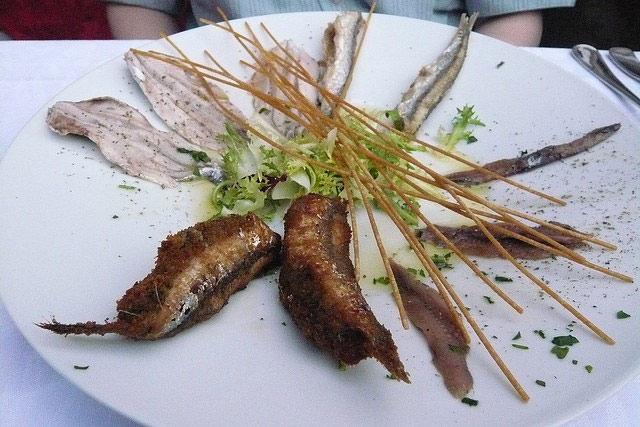
Another food specialty of the region are the famous crostata alla marmellata di limone and the local limoncello, which is called limoncino here, made with the locally grown lemons, and, of course, the Cinque Terre olive oil.
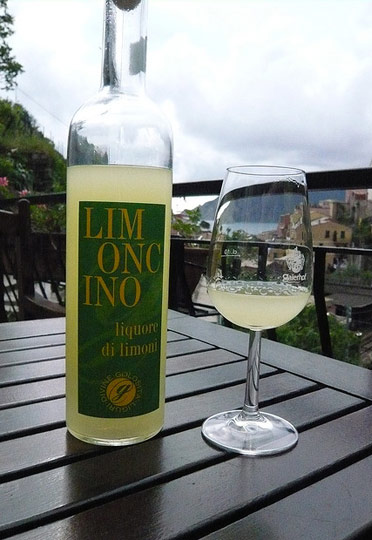
Cinque Terre cuisine shows obvious Ligurian influences, but without any typical local trait, except for the anchovies. Pesto, a typical element of Ligurian cuisine, tastes differently (sweeter and intenser) in the Cinque Terre, as only small leaf basil that is cultivated close to the sea is being used for the local pesto.
The area was declared UNESCO World Heritage site in 1997. In 1999, the Parco Nazionale delle Cinque Terre was created to protect the natural environment and the scenery. The beautiful area is an example of how man has succeeded in finding a balance between nature and its own subsistence. No trip to Italy is complete without a visit to this photographer and foodie paradise!
1. Riomaggiore
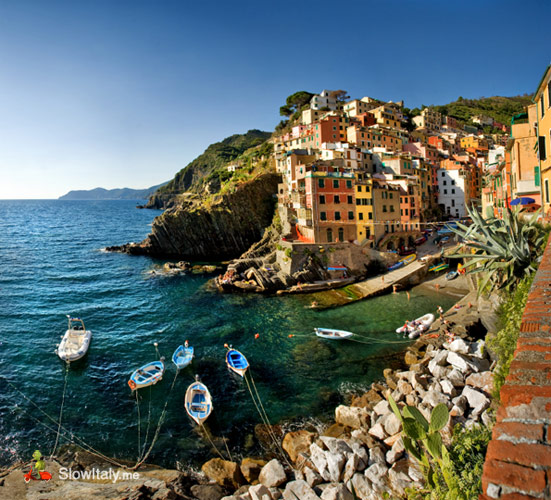
Probably founded by a group of Greek refugees who settled in the area in the 7th century, Riomaggiore dates back to the end of the 12th century when inhabitants of the mountain villages decided to migrate towards the coast.
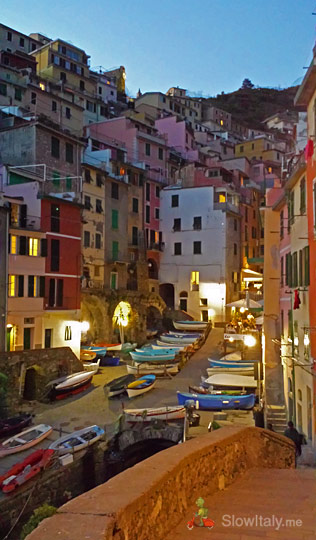
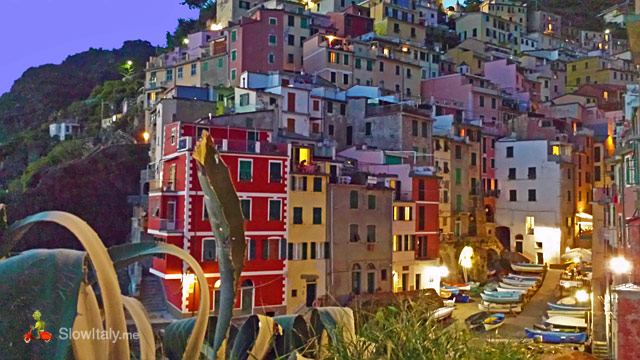
Even though it is not as obvious anymore today, the village was originally made up of two parts, the borgo dei pescatori (fishermen’s village), down at the marina, and the borgo dei contadini, the peasants’ village, higher up the hill.
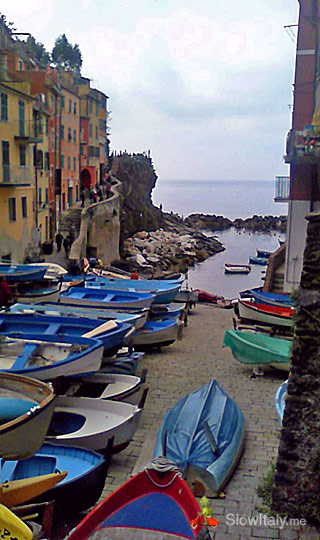
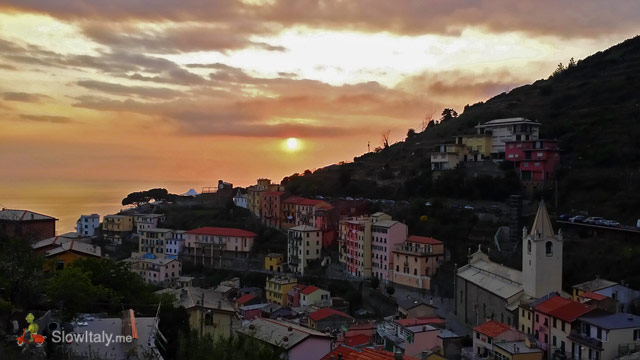
The name of the village stems from Rivus Major one of the two rivers (now covered) that crosses the village.

The village remained relatively unknown until the Florentine impressionist painter Telemaco Signorini discovered it in 1860 and began exhibiting his works depicting the beautiful village in Florence, Venice, London and Paris. The story goes that, while at the market in La Spezia, he met two women who were dressed differently, which made him wonder where they came from. He followed them on their way back to Riomaggiore. At that time the railway didn’t exist, so he walked all the way through the mountains to Riomaggiore. He fell in love with the quaint village and came back at regular intervals.
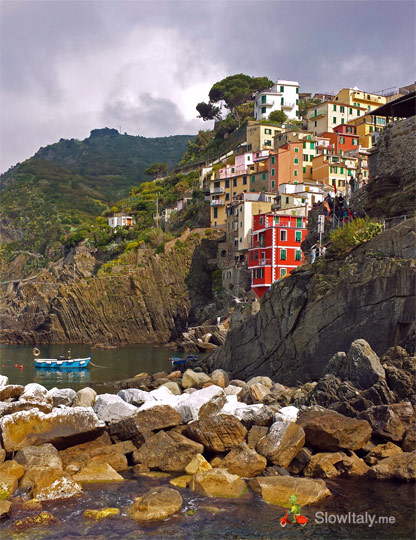
The small marina is extremely scenic at sunset. Past the harbor there is a small cove with rocky pebble beach.
There’s a nice restaurant located at the heart of the Marina, with a beautiful terrace, worth trying, if only for the magical atmosphere in the small, picturesque harbor at night.
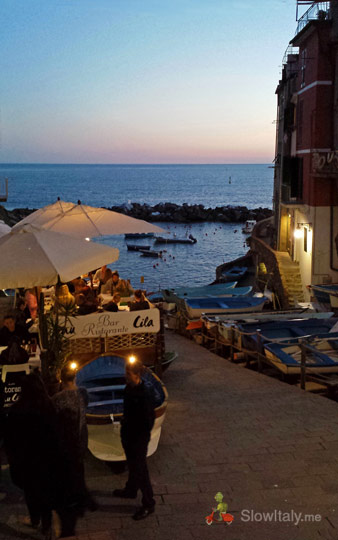
However, one of our favorite restaurants in Riomaggiore is Ripa al Sole, located in the upper part of the village. Try the carpaccio di Ricciola and the Spigola alla ligurese (with baked patatoes, tomatoes and a little pesto).
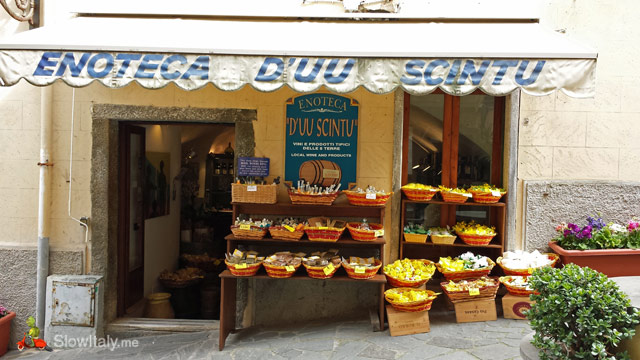
Of particular historic interest also are the Church of Saint John the Baptist, built in 1340, and the fortress.
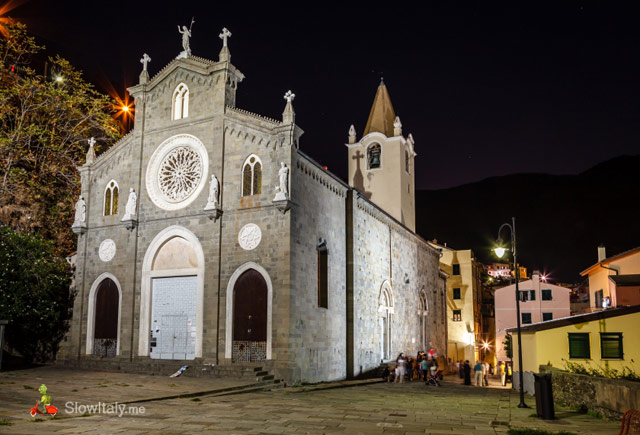
2. Manarola
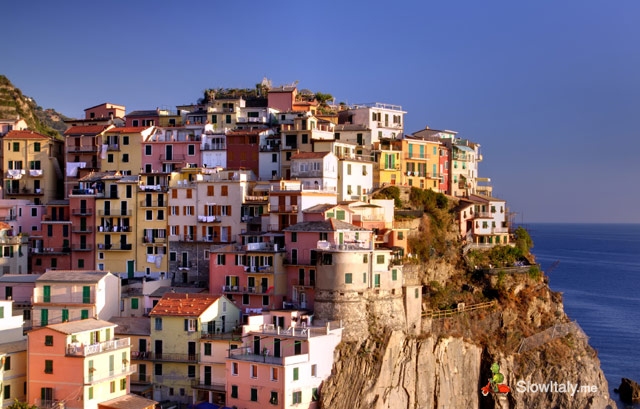
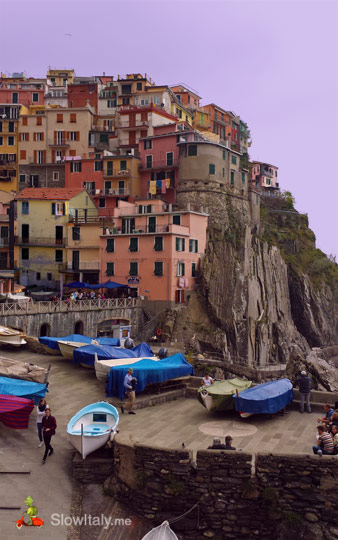
Like Riomaggiore, Manarola is more recent than the other villages of the Cinque Terre. It was founded in the 12th century, along the banks of the river Groppo, when the inhabitants of Volastra, located higher up the mountain, decided to move closer to the sea. The village was once crossed by a river and picturesque bridges connected the left and right banks, before the river was covered to become the present-day main street.
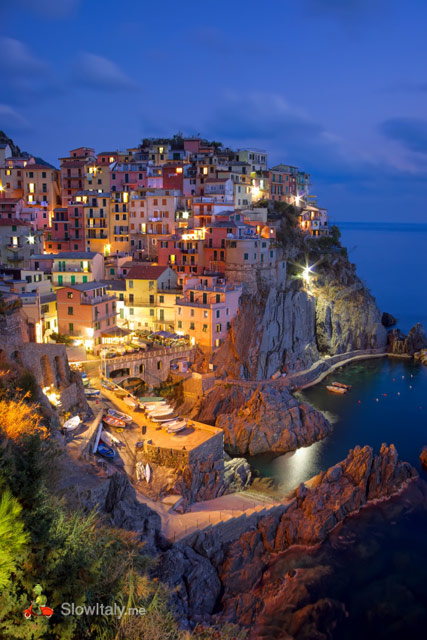
Together with Riomaggiore, Manarola is probably the most poetic village of the Cinque Terre, as it lies at the beginning of one of the most famous and spectacular walking trails, the Via dell’Amore (Lover’s Walk) (currently closed).
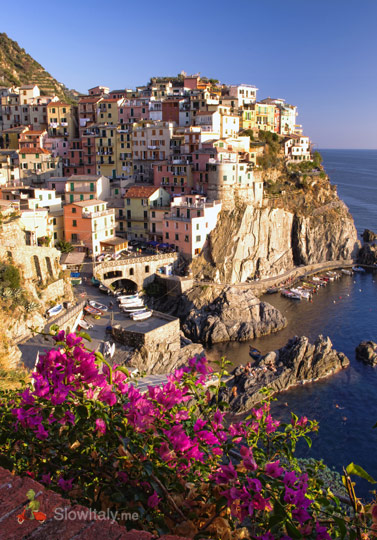
The charm and rustic beauty of this small fisher village has attracted many artists among whom the Italian painter Renato Birolli (who gave his name to the main street).
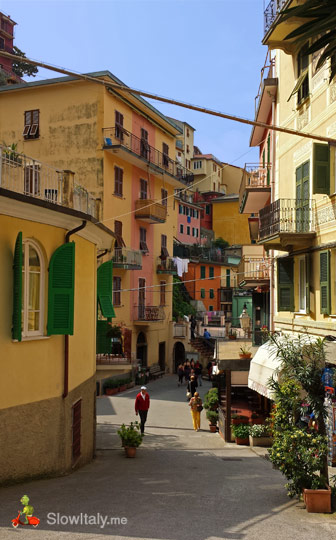
Manarola probably has the highest concentrations of souvenir shops per inhabitants, as well as many artisan shops selling biological products of the Cinque Terre.
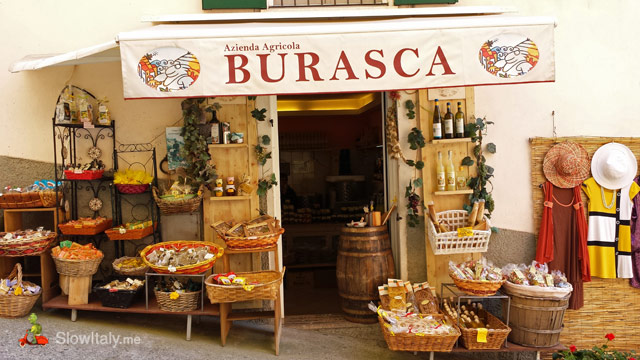
One of the must-try foods is the excellent focaccia al stracchino at La Cambusa (on the left at the beginning of the main street, walking uphill).
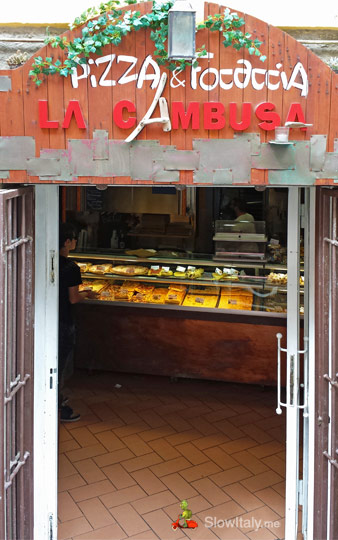
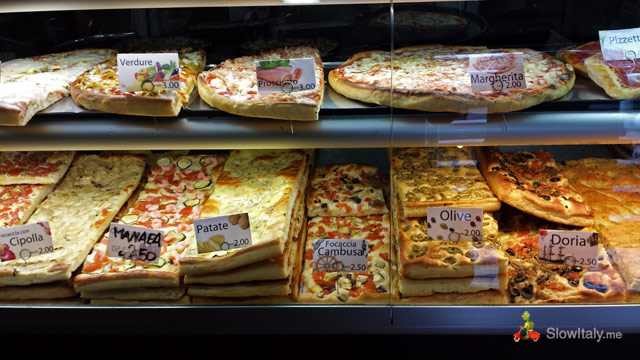
If you like great seafood, head to the restaurant La Scogliera and try the Linguine al Batti Batti. Batti Batti is a special type of shellfish that can only be found in the area.
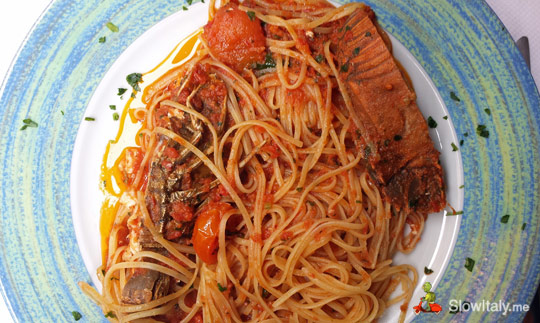
This is how the Batti Batti shelfish looks before it is cooked.
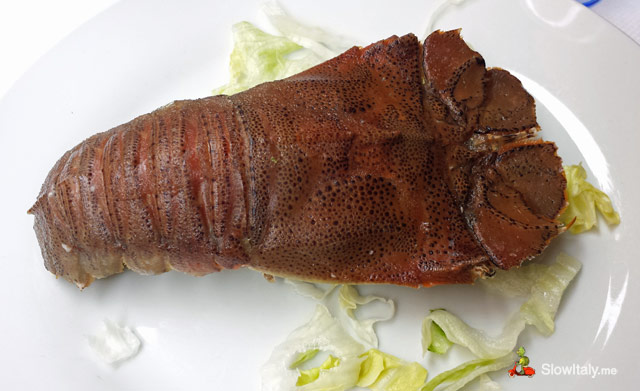
It is extremely rare to find this type of unusual shellfish on a restaurant menu, so if you like refined seafood I definitely recommend to try this dish. See also: 6 delicious types of Shellfish you will not usually find on a restaurant menu.
Some other nice eating places, conveniently located on the main street, include Il Porticciolo, which serves typical cuisine and the enoteca La Cantina della Zio Bramante, where you can try the typical anchovies and other small dishes, with some local or Italian wine.
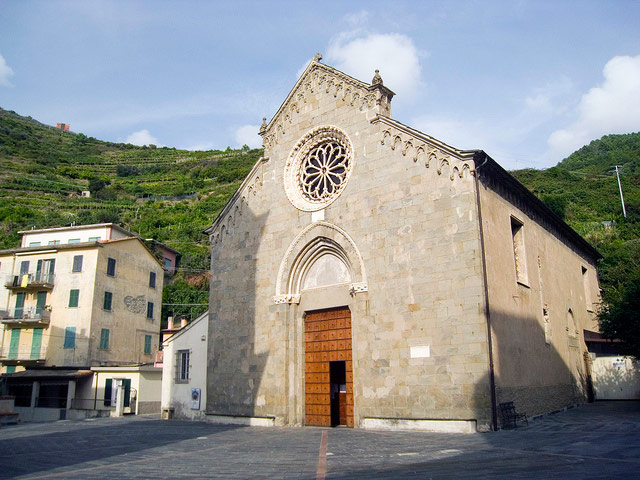
Worth seeing is the Ligurian-gothic-style parish Church of San Lorenzo (Saint Lawrence), built in 1338.
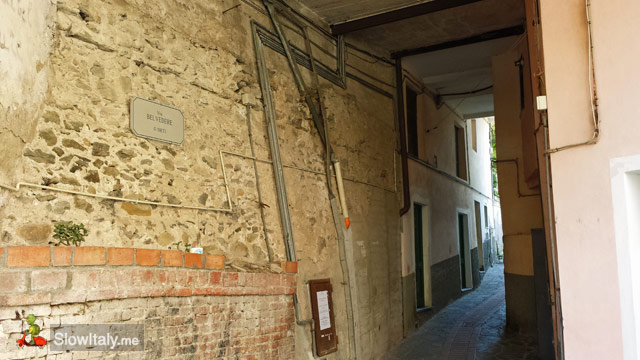
Tip: For beautiful views of the upper part of the village and the vineyards take the Via Belvedere, (on the right, about halfway in the main street when walking uphill). For strategic views of the marina follow the panoramic route that leaves from the harbor to the right. Nothing beats, of course, the Via dell’Amore, but it has been closed for a while now due to the recent landslides.
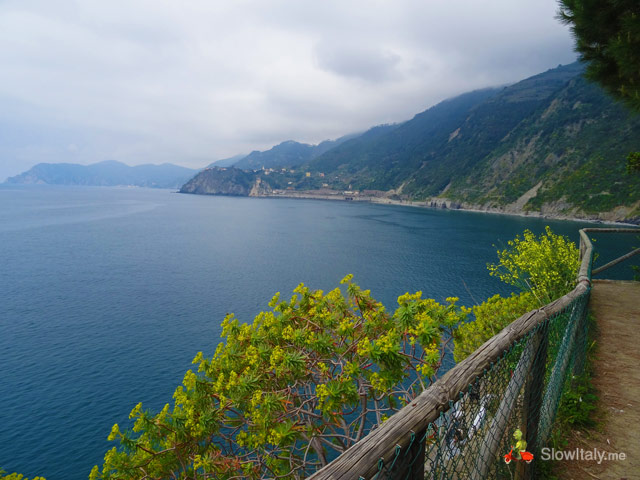
At some point you have stairs on your right leading to a picnic area. From there you have a small elevated area from where you can shoot beautiful pictures of the marina of Manarola.
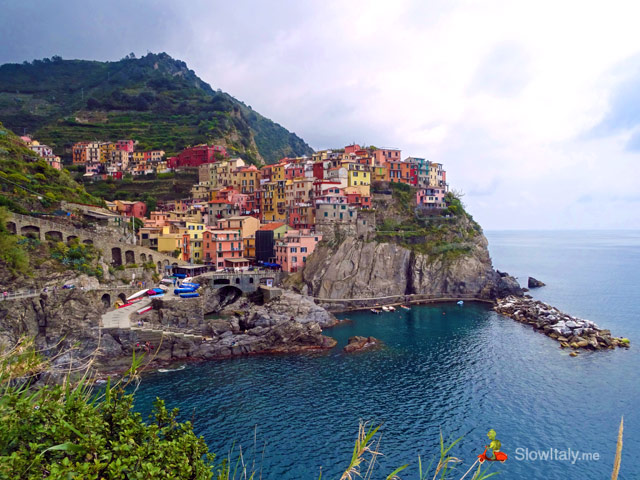
3. Corniglia
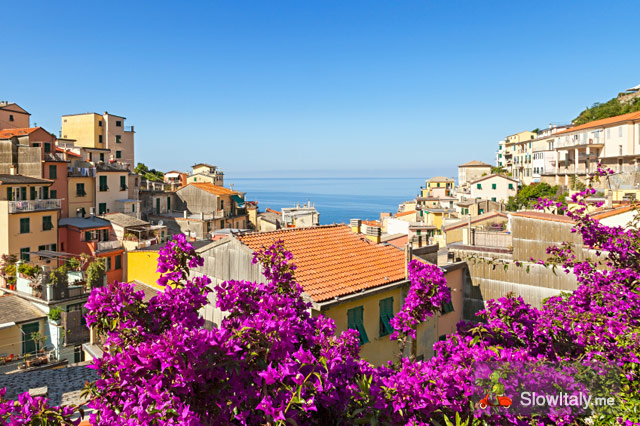
Corneglia is the only of the five villages that is not accessible from the sea, but located on a steep inaccessible promontory at about 100m above sea level.
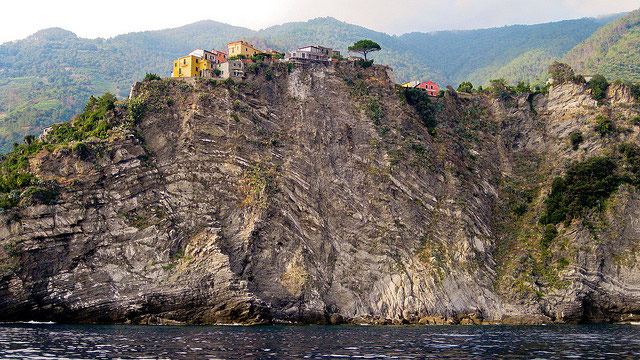
Architecturally Corniglia is also quite different from the other villages with lower houses, instead of the tower houses with 3 to 4 floors that can typically be seen in Riomaggiore, Vernazza and Manarola.
The village derives its name from a Roman family, the Gens Cornelia, to whom the land belonged. The place was already famous for its wine in ancient times. Several amphora engraved with the name “Cornelia” where found in Pompei. The wine produced in Corneglia was also praised by Boccaccio in his Decameron and by Petrarca, Pascoli and Gabriele d’Annunzio.
There’s a beautiful hiking trail going from Volastra (above Manorola) to Corniglia (#6b and #7a). You can get the pulmino (small shuttle) from Manarola, which brings you all the way up to Volastra. I would not recommend doing this part on foot as the walk is not particularly nice and you will want to keep your energy for the hiking trail, which is quite strenuous.
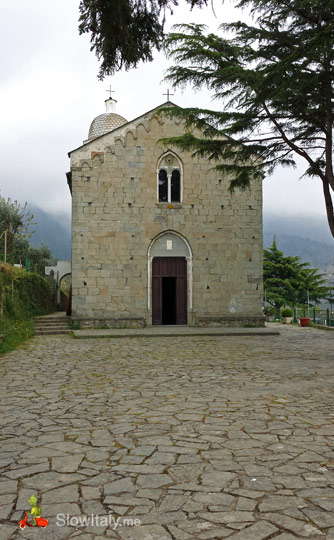
As you get off the bus follow the sign “Corniglia” that leads you on the right behind the church. The first part of path leads you through vineyards with a beautiful open view over the coast. You can make beautiful and interesting pictures of Manarola from above.
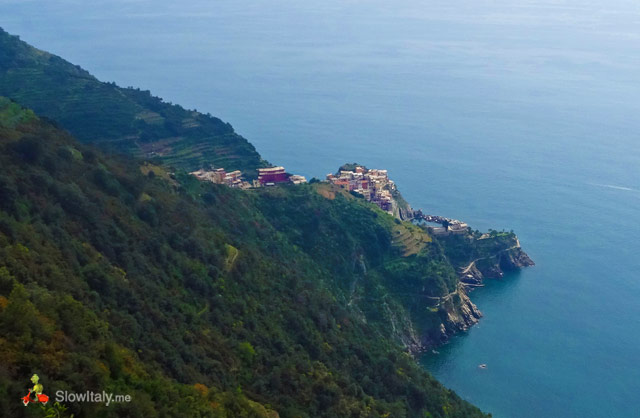
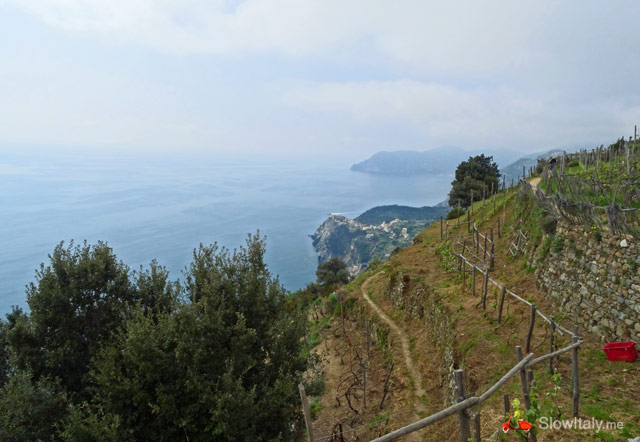
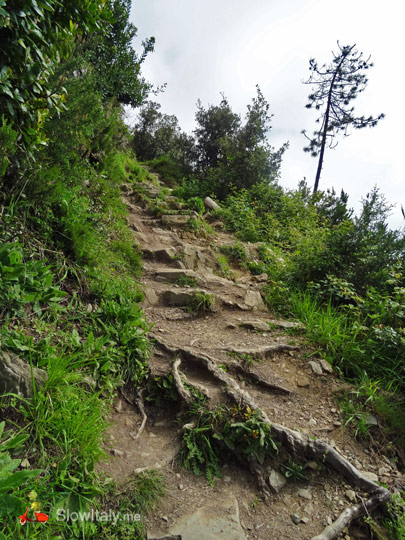
The middle track of the trail to almost the end goes through a forest, which is quite impressive too. The trail itself is relatively challenging and not recommended for people suffering from a fear of heights.
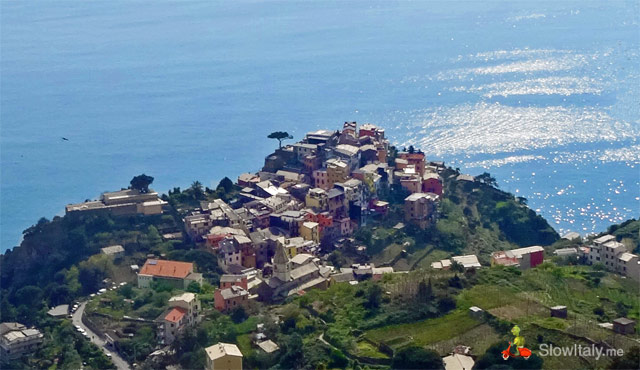
If you choose to reach Corniglia by train you might be negatively surprised to find out that you have to climb a long stairway known as the Lardarina, consisting of 33 flights with 382 steps to reach the village, as the train station is situated at sea level.
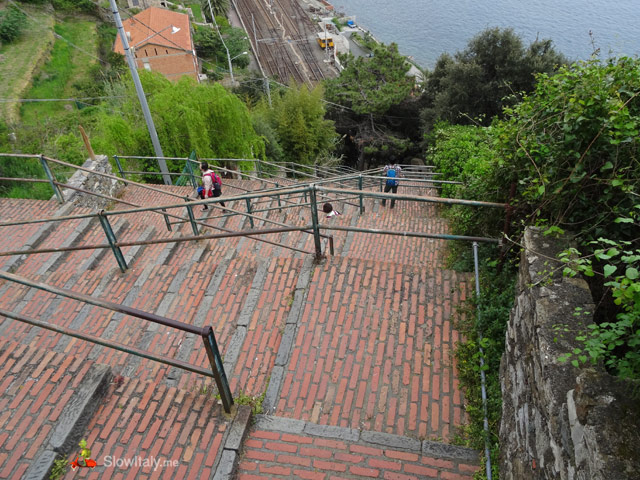
Alternatively you may take the road that runs from the train station to the center of the village.
4. Vernazza
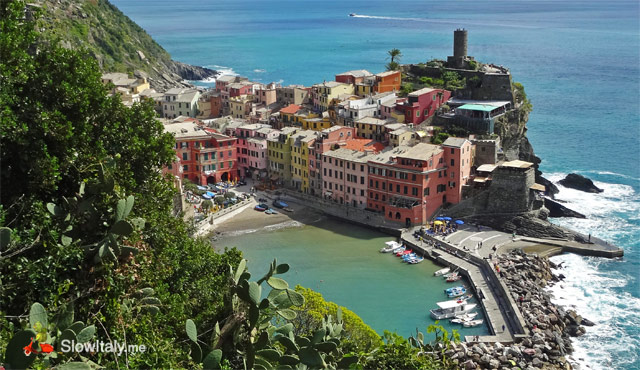
Vernazza is the only natural port of the Cinque Terre and also one of the historically richest ones at the time of the Genovese Republic, as testified by the elegant houses.
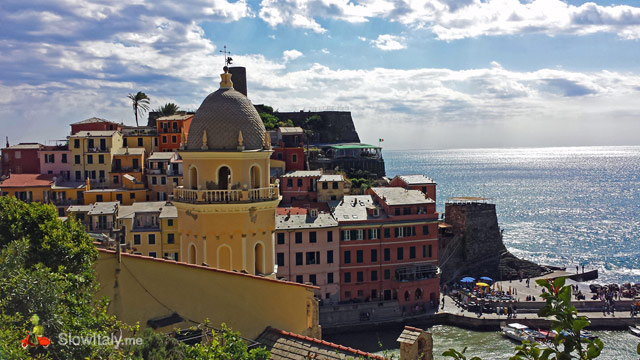
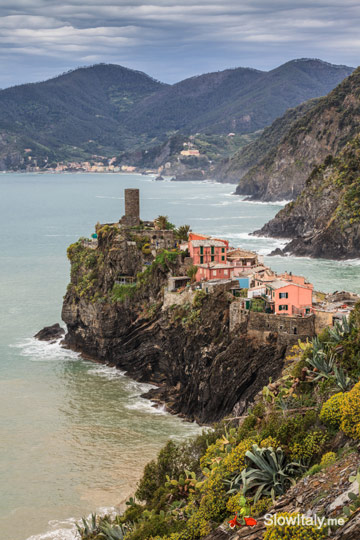
The name of the village is thought to derive from the local wine Vernaccia. Another plausible etymology is the Latin “verna” meaning “indigenous”. The first official document mentioning Vernazza dates back to 1080 and refers to the village as Castrum Vernatio (fortified hamlet).
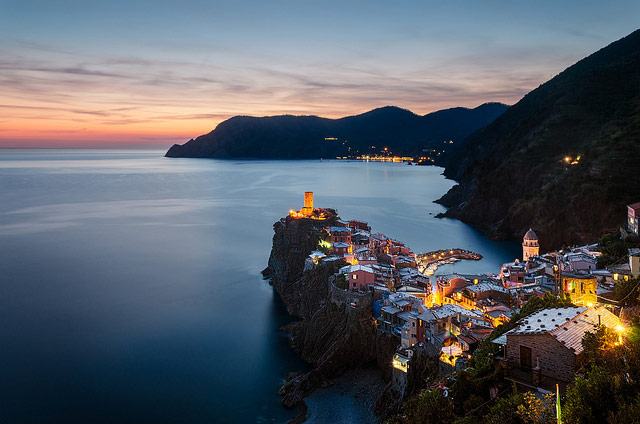
If possible, I recommend to count at least a full day to visit Vernazza, especially if you like to stroll through the little streets, take plenty of photos from different perspectives and have a coffee or aperitif on the main piazza.
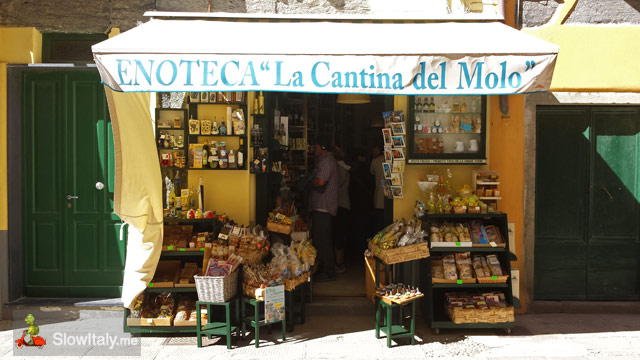
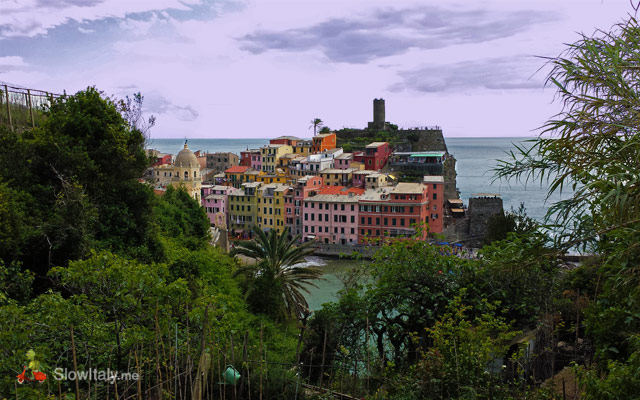
There’s beautiful hiking trail going from Vernazza to Monterosso (#8b), that offers beautiful views over the port of Vernazza. Following the trail uphill going to Monterosso you will find a lot of strategic spots from where to shoot beautiful views of Vernazza.
The trail starts from a small side street (actually, a covered staircase) indicated with a small sign “Monterosso”.
The staircase is nearly invisible from a distance as it is located in between two row houses on the main piazza, on the side opposite the restaurant Gambero Rosso.
Worth seeing is the beautiful church of Santa Margherita of Antiochia, dedicated to the patron saint of Vernazza, located in the main piazza of the village, overlooking the port. The church dates back to the early 13th century. Interesting is the use of black slate, an autochthonous rock of the Ligurian coast.
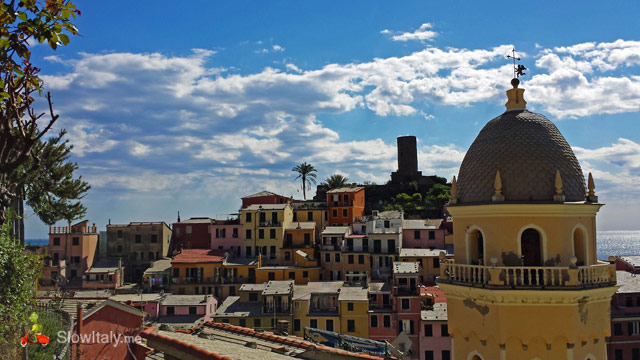
Also noteworthy is the Belforte, under the castle at the entrance of the port.
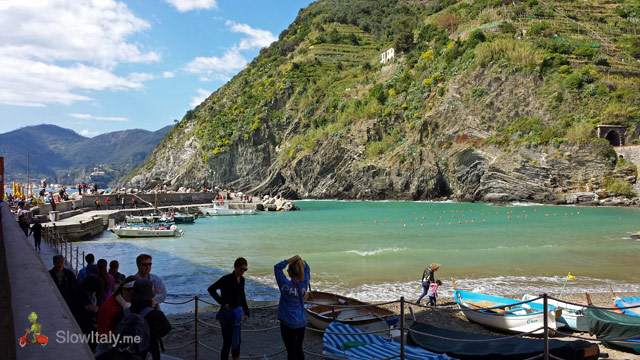
Tip: hang out on the piazza as the locals do, for an aperitif, admiring the beautiful bay (or doing some people watching). The piazza is dubbed u cantu de musse in the local language, meaning the small talk and gossip angle.
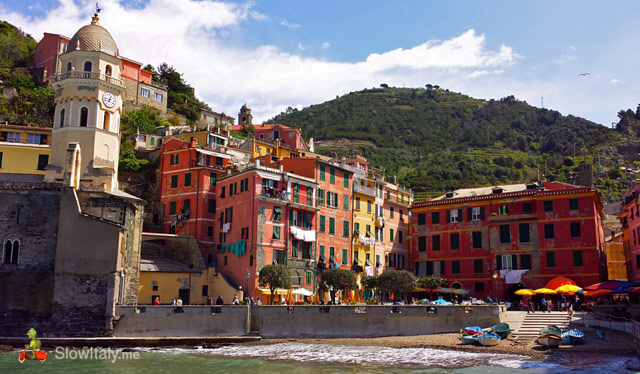
We had lunch at the restaurant Gambero Rosso, strategically located on the main piazza. Don’t let the touristy location fool you, the food is really authentic (with dishes like the Carbona di mare) and delicious. There is a beautiful terrace overlooking the bay, and nice dining rooms also indoors.
Ask for the daily specials or look at the blackboard at the entrance of the restaurant. We recommend the Bavette all’astice, Rombo al forno, and, of course, the Spaghetti alla carbonara di mare (carbonara with anchovies).
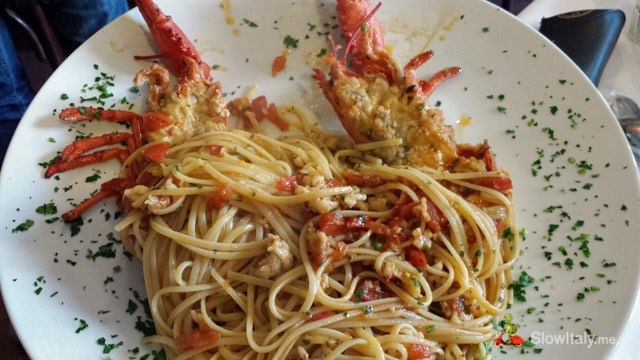
For an amazing view in a magical setting try Ristorante Belforte set in the old fortress and ask for a table on the balcony overlooking the sea.
A popular bar with foreigners is Caffè del Pirata run by the Sicilian twin brothers Gianluca and Massimo (who speak perfect English). It is located a little outside the old town, passing under the tunnel of the railway station, then following the street on the left and a little further you’ll the bar on your right side. They serve great breakfast, lunch, dinner, and have delicious Sicilian pastries, among which the famous cannoli. The cannoli are stuffed on order, so they remain always crispy on the outside as they should be. They also rent rooms at affordable prices.
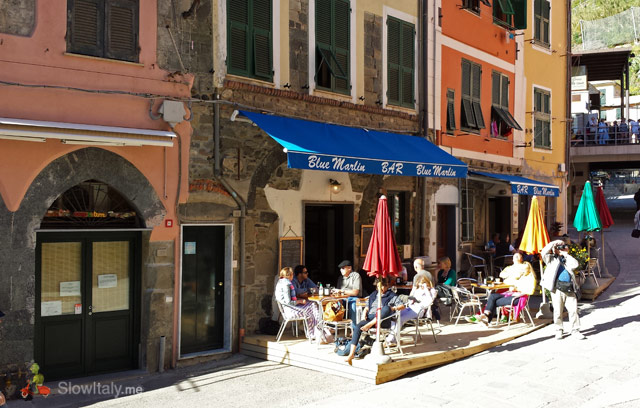
Another nice, typical bar where people gather for breakfast, brunch or a drink is the Blue Marin Bar, on the right side of the main street when leaving of the railway station. Il Baretto, a few steps from the sea, is nice, too, for an aperitif.
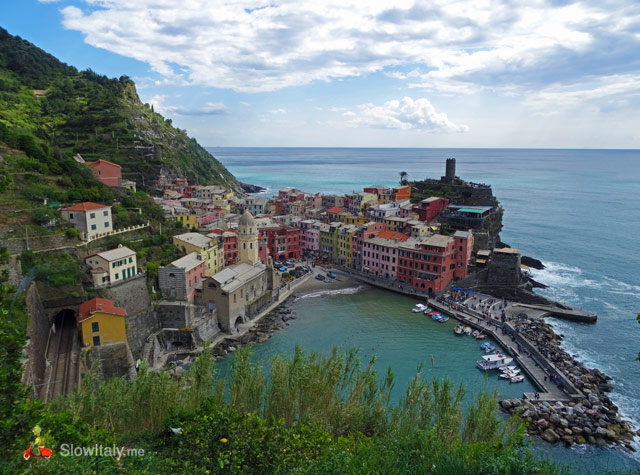
5. Monterosso
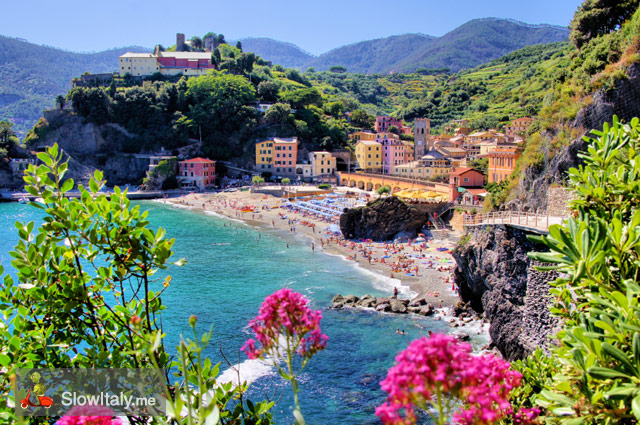
Monteresso is the largest of the five villages and also the only one that allows car traffic. Located at the center of a small gulf, it is the only of the five villages to have a beautiful sandy beach.
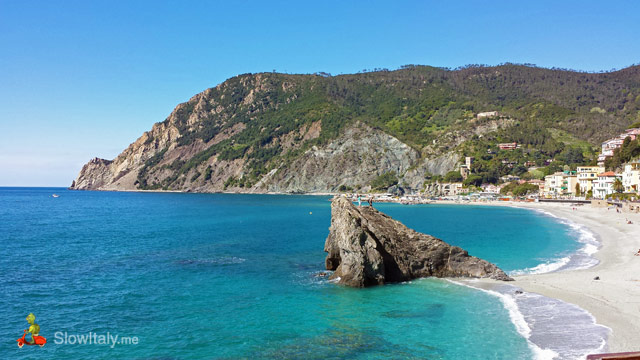
Known as Mons Ruber by the Romans, the village’s name has two etymologies. According to one etymology the name derives from the reddish color of the land or the reddish glow at sunset. According to the second etymology the name derives from the Lord of the castle who was called Rufus because of his red hair “u munte du russu”.
The Nobel prize winner Eugenio Montale spent his vacation time here for twenty years.
For centuries Monterosso has been renowned for its production of lemons and citrons (citrus medica, cedri in Italian).

Count at least 2 to 3 hours to visit Monterosso, unless you want to stay overnight and enjoy the beautiful beach. Monterosso consists of two villages, the old village is on the east side of the Burranco river and the more recent village, Fegina, is on the west side. When you leave the station you have the new town Fegina with the sandy beach on your right and the old borgo on your left.
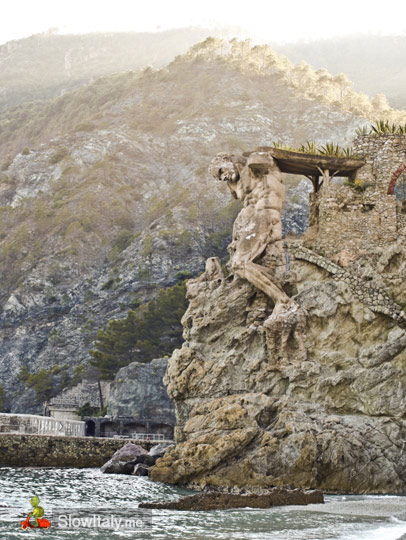
Notable are the fortress of 1245 on the left side and the statue of the Giant on the right, on the western side of the beach, standing 14 meters tall. It was created in the early 1900s by the sculptor Minerbi and the architect Levancher. Before WWII the statue was part of Villa Pastina, which was destroyed by the bombings in 1943, and was transferred to its current location in the 1950s. The Torre Aurora, built in the XVI century, is one of the three remaining towers of the original defensive foritification consisting of thirteen towers. Today it is a private home.
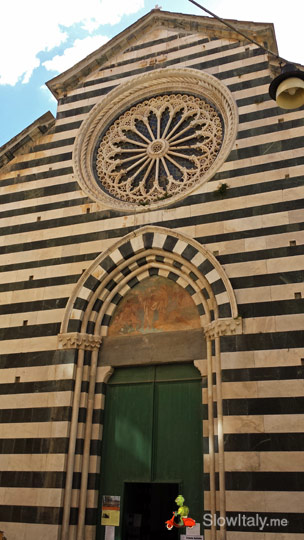
Worth seeing is also the Parish Church of San Giovanni Battista, which probably dates back to at least 1244 (that’s when it was first documented). Its construction was completed in 1307.The façade of Ligurian/Pisan gothic style church is made of alternating stripes of white and black marble. The marble rose window on the facade is one of the biggest of the churches of the Cinque Terre. The fresco above the main portal portrays Saint John baptising Christ. Have a look inside, the columns with alternate blocks of white marble and green stone are quite striking.
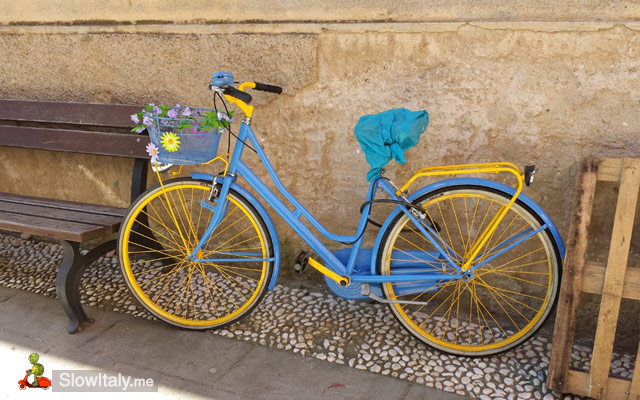
The ruins of the castle can be seen at the top of the mountain, at the end of Via Buranco, the oldest road of Monterosso.
The convent of the Capuchins can be reached by a staircase located in front of Torre Aurora. The convent was built in the XVth century. Inside the convent is a painting attributed to the famous Flemish painter Anthony Van Dyck (1599-1641).
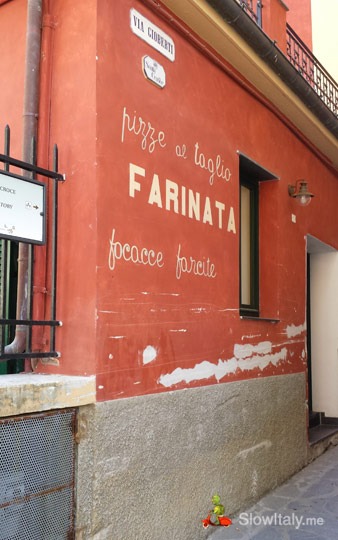
There’s a nice Pizza al Taglio in Via Gioberti, a side street of the main street, indicated with the inscription “Farinata” in white on a red wall. Try the delicious Foccacia al stracchino or Focaccia al stracchino e pancetta.
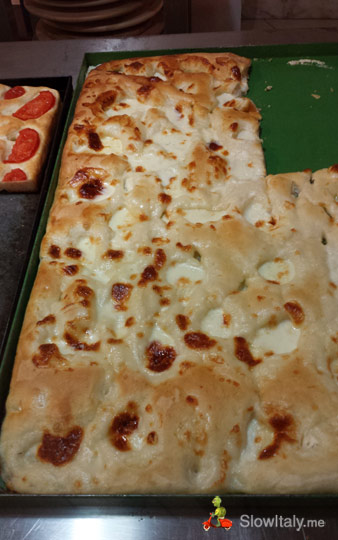
A most-try are also the delicious sfogliatelle with apples from Pasticceria Laura.
During the day, you can also have focacce and “Cundijun”, a variation of the salade niçoise at Fast Bar, which at night morphs into a lively music venue.
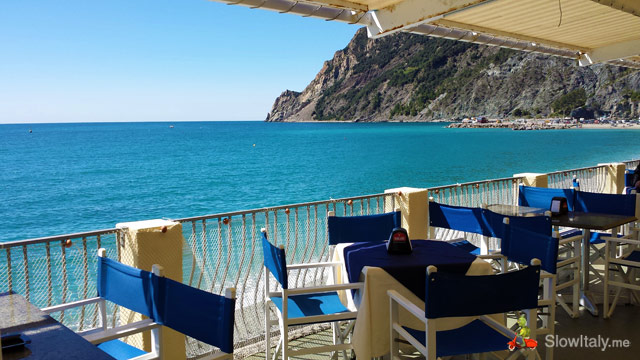
Nice for a coffee or drink is also bar Nuovo Eden on the promenade connecting the new and old parts of the town. The bar has a beautiful terrace overlooking the beach and gulf.
Practical information:
How to get there::
The easiest way is to get to the Cinque Terre is by train. There are direct trains from Milan to either La Spezia, Levanto or Genoa and from there you can reach the Cinque Terre either directly (Levanto, La Spezia) or with one change (Genoa) depending on the day and the time. During summer there is also a ferry service that connects Vernazza with La Spezia, Portovenere, Lerici and Genoa. For those arriving by car there are parking facilities outside Vernazza and Monterosso. Some villages have a shuttle service, and otherwise, pick-up from the parking facility can be organized with your hotel or residence owner.
How many days to visit the Cinque Terre?
If you can afford it and if you love photographing the villages from different perspectives, I would say to spend 3 nights, arriving in the early afternoon the first day and counting an entire morning on your departure day, in order to have 4 days alltogether. It allows you to alternate leasurely strolls through the beautiful streets of Vernazza and Manarola, with some hiking trails between the villages. We did a bit of Riomaggiore on our first afternoon and evening on our arrival day. The following day we did Manarola (we went by boat, but you can also walk following a very scenic path all the way to Manarola from the path leaving under the arch behind the Church of Riomaggiore). Then you can easily lose an entire day in Manarola, taking your time to take photos both from the Via del Belvedere and from the scenic path leaving on the right of the marina. Beautiful places to have lunch also in Manarola, both a nice meal or street food. In the afternoon we did the hiking trails going from Volastra to Corniglia and spent an hour or two in Corniglia. The evening we had dinner at the marina of Riomaggiore. The marina of Riomaggiore at sunset is a must-see, so make sure to plan at least one evening in Riomaggiore. We spent our third day in Vernazza, walked a bit up following the hiking trails to Monterosso for the splendid views over Vernazza. The next morning (which was the day we left) we spent in Monterosso.
How to move around
The best way to explore the Cinque Terre is by train, by boat and on foot. The excellent railway system connects Monterosso to Riomaggiore in a few minutes, with stops at each of the other three villages on the way. Note, however, that Corniglia station is the only one that is located outside the village and separated by a notable staircase, the Lardarina staircase. Riomaggiore and Manarola are separated from the railway station by a pedonal tunnel that arrives at the marina in Riomaggiore and in the center of the village in Manarola. In Vernazza the railway station is located at the beginning of the main street, and easily accessible (no tunnel). Monterosso railway station is located directly on the seaside promenade.
Several panoramic walking paths and hiking trails allow to walk from one village to the next, enjoying a jaw dropping panorama through the vine yards or along the impressive cliffs. For those of who don’t like to walk there are mountain bike tracks and possibilities for underwater diving excursions, as well.
All villages (except Corniglia, which is not accessible by sea) can be reached by batello, a small ferry boat service that connects the four villages. I recommend to take at least once the small ferry boat, because it allows you to take wonderful pictures of the villages form the sea. When going from Portovenere or Riomaggiore towards Manarola, Vernazza or Monterosso make sure to take a seat a secure a good spot on the right to have the best view. When going from Monterosso or Vernazza towards, Manarola or Riomaggiore best places are on the left. The timetable varies from month to month, but from the end of March to mid April there are approximately 7 boats a day between Portovenere and Monterosso from 8.50 to 18.10. In high season there are even more.

Where to stay:
Typically, Manarola and Riomaggiore are places where visitors often come on a day-excursion, so you will find quite a lot of street food shops where people buy snacks on-the-go at lunch time while visiting the villages.
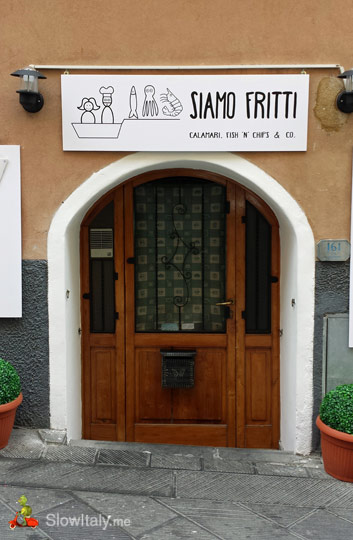
Monterosso and Vernazza give more the impression of picturesque resort villages where people like to stay for a few days, so you see some more formal restaurants, shops selling clothes, souvenirs, local food products and ceramics. You will also find typical artisan shops (botteghe) selling local food products in Riomaggiore, but to a lesser extent. Manarola has a great number of shops selling travel guides, local crafts and local specialties.
We chose to stay in Riomaggiore because we wanted to stay in one of the less touristy villages. While we were very happy staying at our lovely Cinque Terre Residence, we might consider staying in Vernazza on a next trip to the Cinque Terre. Vernazza becomes very crowded between 10:30 and 15:30, so staying there overnight allows you to enjoy the more peaceful moments early in the morning and later at night. For photographers Vernazza is probably even more beautiful to shoot at sunrise and sunset, which is only possible when you don’t have to leave to catch your last train back. The same goes for Manarola. Monterosso, instead, is a good option if you like to alternate hiking and sightseeing with some relax time at the beach. Anyway, if you choose Riomaggiore as your base, we definitely recommend the family-owned and run Cinque Terre Residence. The small hotel, which is located in the upper part of the village, looks like a tiny little hamlet, where the rooms and the reception/breakfast room are each a little stand-alone house with its own terrace.
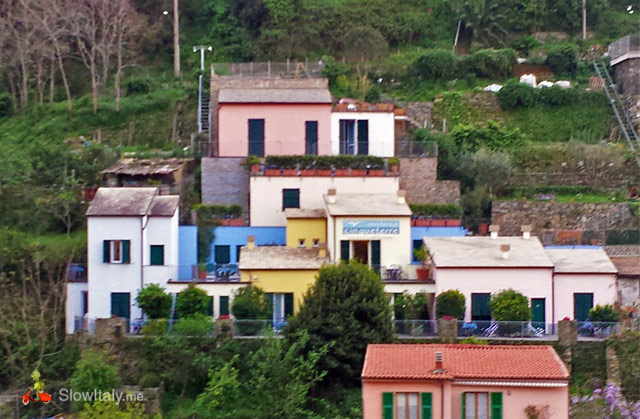
Info: www.cinqueterreresidence.it
When to go to Cinque Terre
One of the must-do things in Cinque Terre is to explore the (sometimes literally) breathtaking hiking trails that connect the five villages. Some of them can be quite strenuous and challenging, so the best time to hike is when temperatures are still relatively mild. Moreover, the villages can become quite crowded during the high season, so I would definitely avoid visiting Cinque Terre in July or August. Reversely, the risk of landslides, which are common in this area, is much higher during the rainy months, so these are also best avoided. Also, the various trails can become very slippery in rainy weather, so the best season is probably mid April, May, June and September.
May:
Monterosso, third week-end of May: Lemon festival
June:
Monterosso, third weekend of June: Festival of Anchovies
Monterosso, June 23rd-24th: Feast in honor of Saint John the Baptist
With bonfire on the beach near the historic center on the evening of the 23rd and a procession on the 24th and lighted candles on the sea.
Corniglia, June 29th, feast of the village’s patron saint, Saint Peter. Tradition is to offer a “torta dei Fieschi” to everyone present on the main piazza.
July:
Vernazza, July 20th, feast of Santa Margherita di Antochia, with stalls selling local products and fireworks at night.
December:
Manarola, December 20th, Luminous Nativity
Possibly the world’s biggest nativity scene as it is displayed amongst the rocky hillside above Manarola.
You might also like:
10 Reasons to visit Genoa next time you are in Italy
Photo credits: all photos © Slow Italy, except (from top to bottom), Monterosso lemons by Simon Collison; Manarola © johny007pan/Istockphoto; Vernazza top view © porojnicu/Istockphoto; Mixed anchovy and Limoncino photos by MMChicago; Riomaggiore by night from the sea by Michael Muraz; Riomaggiore © JustinBlackStock/Istockphoto; Riomaggiore marina (2 photos) © Slow Italy; Riomaggiore uphill © Slow Italy; Riomaggiore from the sea © Slow Italy; Riomaggiore marina (2 photos) © Slow Italy; Riomaggiore shop © Slow Italy; Riomaggiore Church © anshar73/Istockphoto; Manarola by night © johny007pan; Manarola view with flowers © johny007pan/Istockphoto; Manarola Church by Groume; Corniglia © lorenzobovi/Istockphoto; Vernazza by night by Michael Muraz; Monterosso view © jenifoto/Istockphoto; cedri (citrus medica) by Giovanni Dall’Orto; Monterosso giant © Roni-G/Istockphoto.

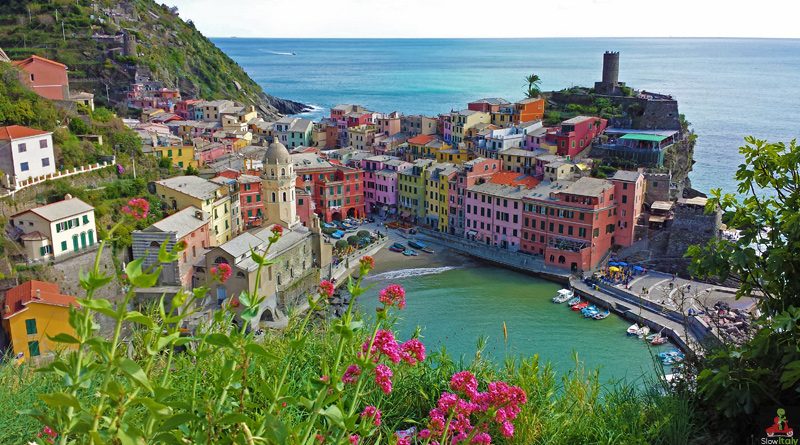
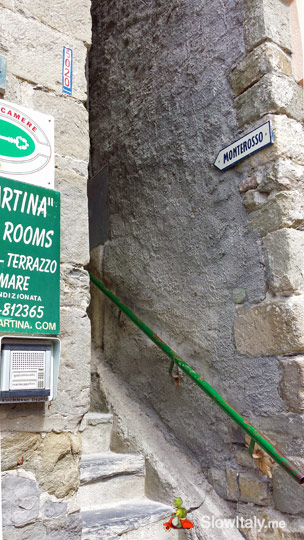
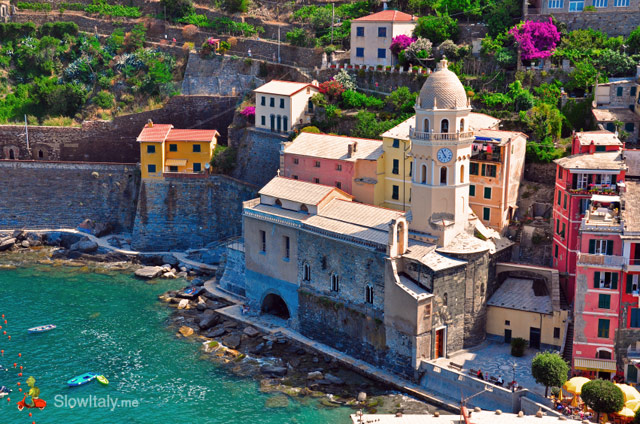
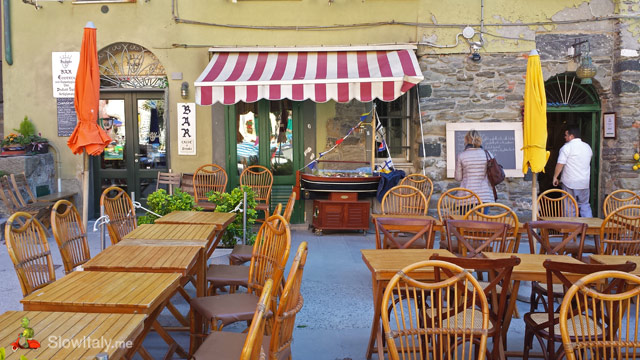
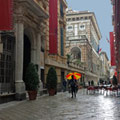
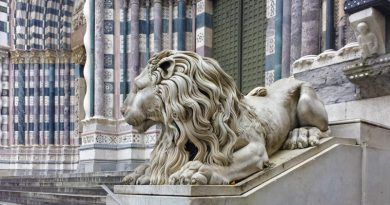
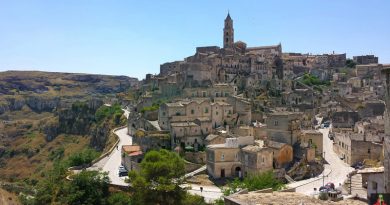
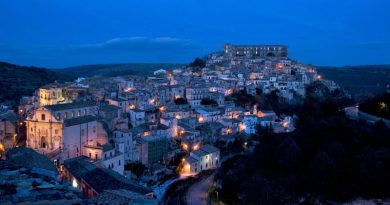
I visit the area 3 years ago and e njoy every minute. Travel by boat and train and was walking. Lived in La Spezia in one week and also reach a visit to Genova
I’m glad you had a great time Else Marie! Cinque Terre and all of Liguria is such a beautiful region.
Stunningly beautiful and inspiring. 🙂 I long to return to Italy one day soon. XO
I’m so glad you like it, Krista! Hope you will return to Italy soon, because I’m looking forward to reading your articles about your Italy trips! 🙂